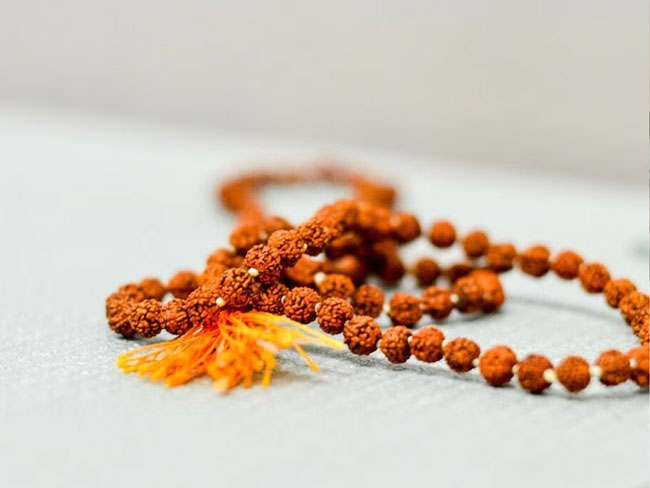 In Hinduism, mantras play a significant role in pleasing deities and achieving spiritual success. Chanting mantras with the proper method and correct number of repetitions is believed to yield auspicious results. To keep track of the chant count, people use malas (prayer beads). A large mala typically consists of 108 beads, while a smaller one contains 54 beads. These malas are made from materials like rudraksha, tulsi (basil), sandalwood, and crystals. Let’s explore which mala is ideal for chanting specific deities’ mantras.
In Hinduism, mantras play a significant role in pleasing deities and achieving spiritual success. Chanting mantras with the proper method and correct number of repetitions is believed to yield auspicious results. To keep track of the chant count, people use malas (prayer beads). A large mala typically consists of 108 beads, while a smaller one contains 54 beads. These malas are made from materials like rudraksha, tulsi (basil), sandalwood, and crystals. Let’s explore which mala is ideal for chanting specific deities’ mantras.
1. Rudraksha Mala
The Rudraksha mala is considered most auspicious for pleasing Lord Shiva. This mala contains 108 beads, and its significance lies in Vedic astronomy. According to scriptures, there are 27 nakshatras (constellations), each with 4 phases, and the 108 beads represent these phases. The Rudraksha mala is ideal for chanting the Gayatri Mantra, Mahamrityunjaya Mantra, Goddess Durga’s mantras, and Lord Ganesha’s names and mantras.
2. Turmeric Mala
Turmeric holds spiritual and religious significance in Hinduism. A Haldi mala (turmeric mala) with 108 beads is particularly useful for chanting Lord Ganesha’s mantras. It is also recommended for chanting Lord Vishnu’s mantras and Brihaspati (Jupiter) mantras to gain divine blessings and prosperity.
3. Tulsi Mala
The Tulsi mala is especially dear to Lord Vishnu. It is also used for worshipping Lord Vishnu’s incarnations, including Lord Rama. The Tulsi mala contains 108 beads and is considered highly sacred for devotees of Lord Vishnu.
4. Sandalwood Mala
The Chandan mala comes in two types—white sandalwood and red sandalwood. Red sandalwood beads are particularly associated with chanting Lord Krishna’s mantras. This mala also consists of 108 beads and is known to bring calmness and devotion during worship.
5. Crystal (Sphatik) Mala
The Sphatik mala is made from crystal quartz and is known for its purity and cooling energy. This mala, with 108 beads, is highly beneficial for pleasing Lord Ganesha and Goddess Saraswati. It is also ideal for chanting Goddess Lakshmi’s mantras to attract wealth and prosperity.
Significance of 108 Beads
The number 108 holds immense importance in Hindu traditions. It symbolizes the 27 nakshatras, with 4 phases each, representing cosmic completeness and spiritual unity. Each bead signifies a step toward enlightenment during mantra chanting.
Conclusion
Using the correct mala for chanting specific mantras amplifies spiritual benefits and helps devotees connect deeply with their chosen deities. Whether it’s rudraksha, tulsi, haldi, sandalwood, or sphatik, choosing the appropriate mala enhances the power of mantra recitation.




